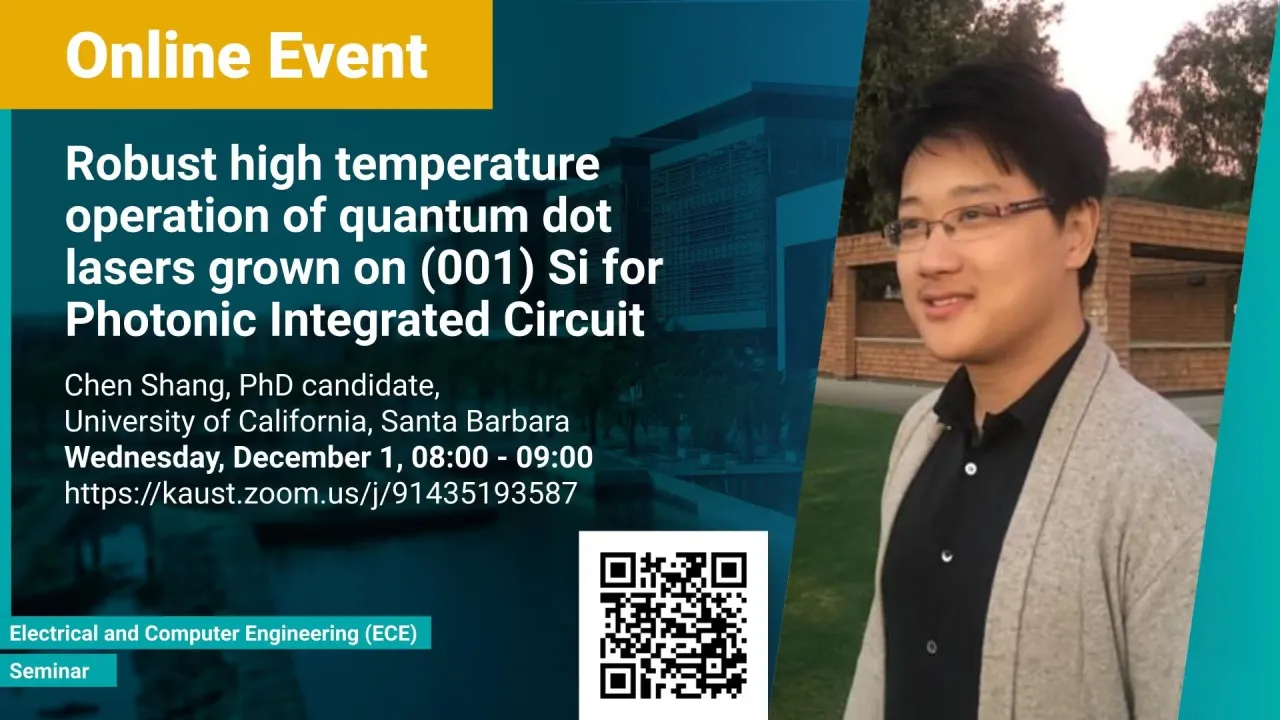
Robust high temperature operation of quantum dot lasers grown on (001) Si for Photonic Integrated Circuit
- Chen Shang, PhD candidate, University of California, Santa Barbara
KAUST
Epitaxially grown quantum dot (QD) lasers are emerging as an economical approach to obtain on-chip light sources. Thanks to the three-dimensional confinement of carriers, QDs show greatly improved tolerance to defects and promise other advantages such as low transparency current density, high temperature operation, isolator-free operation, and enhanced four-wave-mixing.
Overview
Abstract
Epitaxially grown quantum dot (QD) lasers are emerging as an economical approach to obtain on-chip light sources. Thanks to the three-dimensional confinement of carriers, QDs show greatly improved tolerance to defects and promise other advantages such as low transparency current density, high temperature operation, isolator-free operation, and enhanced four-wave-mixing. These material properties distinguish them from traditional III–V/Si quantum wells (QWs) and have spawned intense interest to explore a full set of photonic integration using epitaxial growth technology. We present here a summary of the most recent developments of QD lasers grown on a CMOS-compatible (001) Si substrate, with a focus on breakthroughs in long lifetime at elevated temperatures. Threading dislocations are significantly reduced to the level of 1 × 106 cm–2 via a novel asymmetric step-graded filter. Misfit dislocations are efficiently blocked from the QD region through well-engineered trapping layers. A record-breaking extrapolated lifetime of more than 200000 hours has been achieved at 80 °C, forecasting that device reliability is now entering the realm of commercial relevance and a monolithically integrated light source is finally on the horizon. The realization of such light source would not only benefit communication applications, but all other field where Si photonics would play a major role.
Brief Biography
I graduated from Purdue University in 2016 with a Distinguished Student Award. I later came to UC Santa Barbara to pursue my Ph.D. in optoelectronic materials in Prof. John Bowers's group. The focus of my research has been to develop the material platform for monolithically integrated on-chip light source for Si photonics. We currently hold the world record performance and reliability of such devices. The monolithic integration has always been thought as the ultimate and the most economical feasible solution for integrating III-V gain medium onto the Si photonic circuit.
